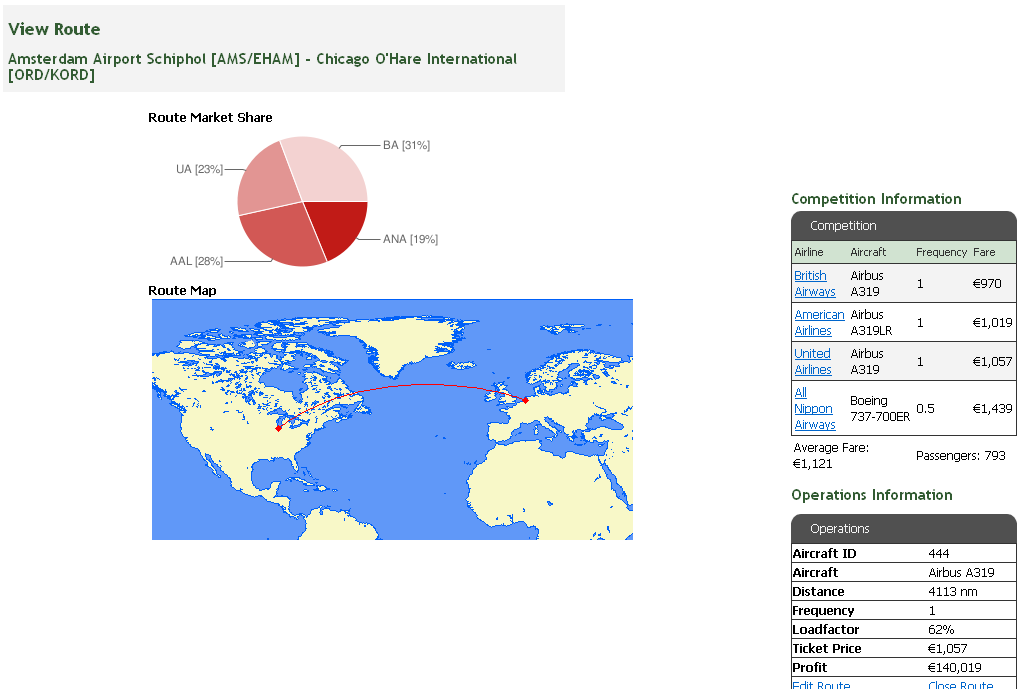Let me use an example in the world I am in (PW #1481) to explain a little bit.

What happened on this ORD-AMS route was:
1. I was the first one to fly the route, which is a hub-to-hub route in my alliance (AMS being a British Airways hub, while All Nippon Airways is also another fellow alliance member), and charged $1025 on the daily A319 service. In fact, I concluded from earlier experiments that long-haul routes are most profitable on 1x A319/A319LR whenever possible, as long as no one else flies the route with bigger equipment.
2. Then AA came in with 0.5x B767-200ER (which offers the same average capacity as 1x A319) and was only able to offer a fare of $780. My load dropped to just above 60% and I had to lower my fare to $815 to compete. This is understood because AA is probably offering way too much capacity on alternate days, and concurs with my earlier experimental results.
3. AA probably realized that flying 0.5x B767-200ER is sub-optimal, so it switched to 1x A319LR. BA then came in with 1x A319 and charged $970. I then raised my fares to $1057; as a result, the ORD-AMS route once again became my most profitable route systemwide.
4.
Here comes the problem:Fellow alliance partner NH wanted to conquer the entire world and came in with 0.5x 737-700ER (which is roughly 1/2 the capacity I am offering) as a tag-on of one of its Asia-Europe routes. NH charged the highest fare, but it immediately trashed my loads to just above 60% again. If NH was using a bigger aircraft this could have been easily understood, but it is offering less-than-daily service and the least capacity among the four players.
My point is not to bash another player (I have no intention of such), but I want to understand the rationale behind the AM program code that 0.5x service trashes the yields even if done on a small aircraft. Since this appears to be not quite reasonable, I would be happy if this part of the code could be fixed as a remedy.
